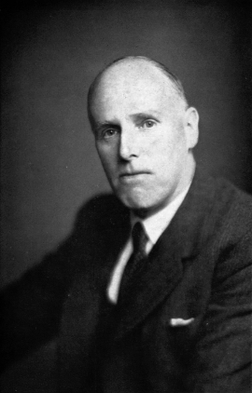Wallace Akers facts for kids
Quick facts for kids
Sir
Wallace Akers
|
|
|---|---|
 |
|
| Born | 9 September 1888 Walthamstow, England
|
| Died | 1 November 1954 (aged 66) Alton, Hampshire, England
|
| Nationality | British |
| Education | Aldenham School |
| Alma mater | Christ Church, Oxford |
| Occupation | Chemist and industrialist |
| Years active | 1911–53 |
| Employer | Brunner Mond Borneo Company Imperial Chemical Industries Tube Alloys |
| Known for | Director of the Tube Alloys project |
Sir Wallace Alan Akers CBE FRS (born September 9, 1888 – died November 1, 1954) was a British chemist and a leader in industry. He started his studies at Oxford University, focusing on physical chemistry, which is about how chemicals behave.
During World War II, from 1941 to 1945, he led a top-secret British project called Tube Alloys. This project aimed to research and develop atomic weapons. After the war, he became the director of research at Imperial Chemical Industries (ICI), a very large chemical company. He also helped set up the United Kingdom Atomic Energy Authority. Sir Wallace Akers passed away in 1954 when he was 66 years old.
Contents
Early Life and Education
Wallace Alan Akers was born in Walthamstow, England. He was the second child of Charles Akers, who was an accountant. Wallace went to Lake House School and then Aldenham School.
Later, he attended Christ Church, Oxford University. There, he studied physical chemistry and graduated with top honors in 1909.
Career in Industry
After university, Wallace Akers joined a company called Brunner Mond & Company. He worked there as a researcher. In 1924, he moved to the Borneo Company Limited, where he became the general manager in the Far East.
He came back to England in 1928 to join Imperial Chemical Industries (ICI). Brunner Mond had joined with ICI earlier. By 1931, he was in charge of ICI's Billingham division. This part of the company mainly made ammonia, which was a very profitable product for ICI. Ammonia was made using hydrogen under high pressure.
Making Synthetic Petrol
Between 1933 and 1936, Akers worked on a project to create synthetic petrol. This petrol was made from coal using a process called hydrogenation. ICI hoped to compete with oil companies. However, it became clear that making petrol this way would be too expensive. Since it was important for national defense, Akers tried to get money from the government to help.
In 1937, ICI changed its organization. Akers moved to ICI's main office and worked closely with Holbrook Gaskell III. At this time, Britain was getting ready for war. ICI started making more products for the military, and Akers became an executive manager in 1939.
Leading the Tube Alloys Project
In 1941, the British government asked Akers to lead the Tube Alloys project. This was a secret program to research and develop atomic weapons for Britain. This project also encouraged both Britain and America to work on what became the Manhattan Project. The Manhattan Project eventually led to the creation of the first atomic bombs.
An official historian, Margaret Gowing, said that Akers was chosen because of his strong personality and drive. He had these qualities in abundance.
Working with the Americans
Akers' background at ICI sometimes caused problems when dealing with the American Manhattan Project. American officials, like Vannevar Bush and Leslie Groves, thought he was too focused on ICI's business interests. They worried that Britain was interested in atomic energy mainly for its commercial uses after the war. Because of this, James Chadwick was chosen to lead the British team working with the Americans. However, Akers remained the director of Tube Alloys until the war ended.
After the War
In 1946, Akers returned to ICI's board of directors. He served as the director of research until he retired in April 1953, when he turned 65. He helped set up research fellowships at universities and gave money to university labs for research. In 1946, he started the Butterwick Research Laboratories for basic research, not just for making money. These labs were later renamed the Akers Research Laboratories in his honor.
Awards and Recognition
Akers received several honors for his work during the war. He was made a Commander of the Order of the British Empire (CBE) in 1944. In 1946, he was knighted, which means he was given the title "Sir."
In 1953, he became a fellow of the Royal Society, a very old and respected scientific organization. He also received honorary degrees from Durham University and Oxford University.
Later Contributions
Even after retiring, Akers continued to be involved in science. He was a member of the Advisory Council for the Department of Scientific and Industrial Research. He was also part of a committee that planned the organization of what became the United Kingdom Atomic Energy Authority.
He was a member of the National Gallery's scientific advisory committee and later became a trustee. From 1948 to 1954, he was the treasurer of the Chemical Society. In 1953, he married Bernadette Marie La Marre. He passed away at his home in Alton, Hampshire, on November 1, 1954.

